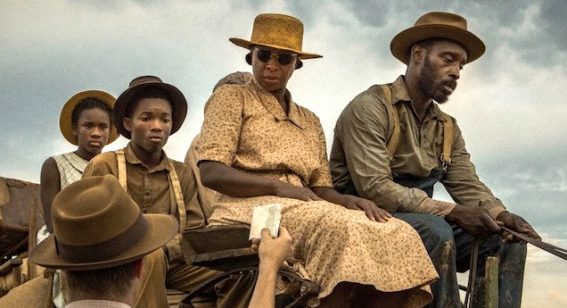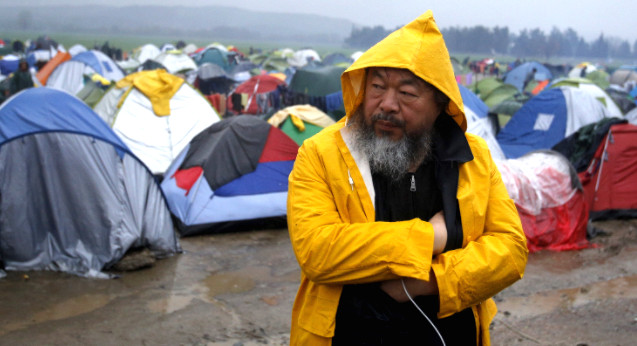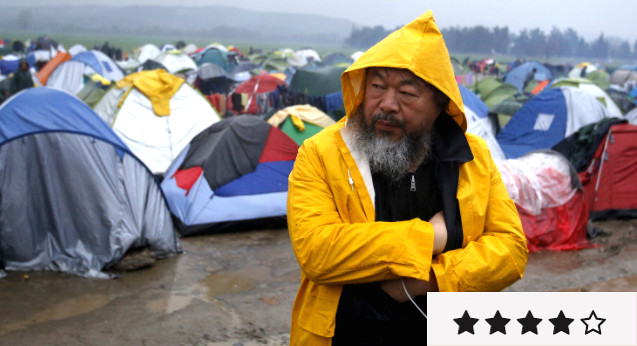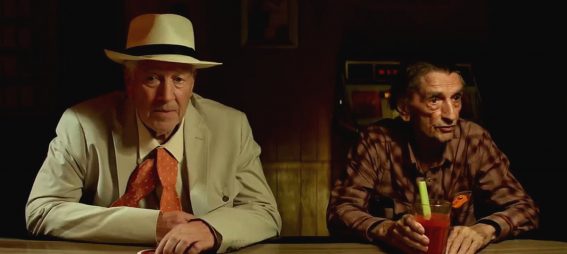
Human Flow review: a vital documentary about a global emergency


Director Ai Weiwei’s exposé about the global refugee crisis opens with long drone-captured shots of small boats travelling across a seemingly endless expanse of water. The colour of the ocean and the sky is a similar kind of blue: pale, shimmering aqua. Our minds don’t know what to make of a tableau as vast and awe-inspiring as this; the feeling is like trying to contemplate infinity.
The director segues to aerial images of refugee camps in Iraq, with a painterly appreciation of colour and tone – an unsurprising quality of Human Flow, given Weiwei is a renown artist and activist. The palette is notably different, sandy and tan. By keeping his lens initially far from humans, and pitting them against natural enormity, the director draws a sense of scale.
Displacement of people around the world is a problem so vast it is, like these picturesque natural environments, practically incomprehensible. A core objective of Weiwei’s moving, alarming and painfully educative film is to make an abstract kind of devastation real and tangible. His documentary is a big picture with small, aching details. It is hard to know which is more affecting: close-ups of his destitute subjects, the contours of their emotions riven across their faces, or long shots of these people in flock-like masses, moving like cattle.
The director travels among them, moving across the globe with people in turmoil (in 2016 alone, the year the film was shot, an estimated 22 million people registered as refugees, more than half of them children). His brief, intermittent on-screen appearances tell us that this is no dry academic exercise; no ‘phoned in’ documentary pieced together from the artist’s studio in Berlin. Weiwei was there, on the ground, absorbing stories and witnessing heartache, which enhances the film’s earthy, essential feel..
Little time is given to explanations, certainly of the political kind. There are interviews with the displaced people themselves – usually between long slabs exploring situations and living conditions – during which Weiwei, despite his curiosity and personable demeanour, struggles. What could he possibly ask these people, and how could they put their suffering into words?
The director is acutely aware that being present, at various locations around the globe, crew in tow, able to fly in and out as he pleases, is a great unshared privilege. As much as he is among his subjects, there is an immeasurable gulf between them and the exiled Chinese artist. At one point an image of a plastic bag floating in the wind appears, in this context a kind of flip-side to the famous ‘so much beauty in the world moment’ from American Beauty. The idea that beauty is all around us, everywhere we look, surely belongs to the privileged.
Human Flow is a long film (145 minutes) but Weiwei spends his running time wisely, making connections and building his core argument, which is that the planet is in the midst of a human emergency. It feels like the definitive documentary of its kind, and is, by any definition, an immensely important film. Human Flow resists sentimentalisation – if framed in the right way, the kind of devastation it explores can, to an extent, speak for itself – but nor does it keep a safe and clinical distance. It is a sort of living, breathing cine-thesis: a deeply humane documentary that is also rigorously authoritative.
Find Times & Tickets for Human Flow




